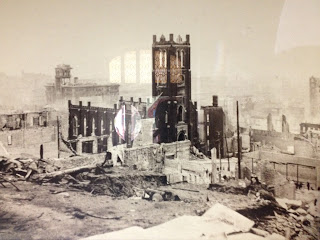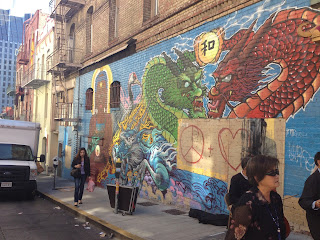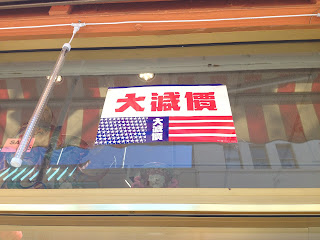Without a doubt, North Beach is one of the liveliest
communities in San Francisco. From the street art to the bustling of the
always-packed café’s and nightclubs, there is never a dull moment in North
Beach. Loved by citizens of San Francisco and tourists alike, North Beach is a
one of a kind neighborhood. Known as the “Little Italy” of San Francisco, North
Beach has many unique Italian style café’s, bookstores, restaurants, old timey
barbershops, and small family owned bakeries. While these attractions alone are
enough to bring anyone into the neighborhood, North Beach is also famous for
being the home of the "Beat" literary movement of the 1950s. These streets, café’s, book
stores, and other establishments contain history from one of America’s greatest
time periods, and it is easily seen through the art work and signage just how
much history and life there really was and still is within this neighborhood.
While I had
been to North Beach as a tourist before, I had never really taken the time to
really get to know the neighborhood before venturing into North Beach this past week. With a traveling companion who was both a
native to the city and of Italian decent, I was on a real tour of an area many
visit but never truly get to experience. As my tour guide began to show me the good places
to eat, the best nightclubs, and the best café’s, I began to notice how much
the signage of the neighborhood was competing for my attention. Signs weren’t
just above restaurants, but in the windows, on the streets, and even painted on
the sidewalks surrounding the buildings! The more we began to walk through the
neighborhood the more places my tour guide began to point out, and I noticed
just how many “good eats” there were within such a close vicinity. It was no wonder these
signs were trying to compete for my attention; with so many good places to eat the
stores had to compete to remain in my thoughts.
As I began
to notice the signage more and more, I began to notice how distinct each form
of signage was. The graphic language and bright lights of the nude nightclubs,
the hand painted signage-design of the bookstores, and the old fashioned
Italian styled signage of the café’s and restaurants - each form of signage was
unique and felt as if it belonged with the establishment it represented. The
signage of North Beach felt very unique in that it was specifically tailored to
fit the “vibe” of the establishment it symbolized. It was as if the owners of
the businesses took into consideration how to convey their stores through
signage before building them. As a signage student I found this to be quite
amusing.
While hard
to get to by bus, North Beach is a community no one should skip while
visiting the city. It is a neighborhood rich with culture and community, and
even if you aren’t of Italian decent, you’re always welcome at the proverbial
family style dinner table known as the North Beach district.










































































